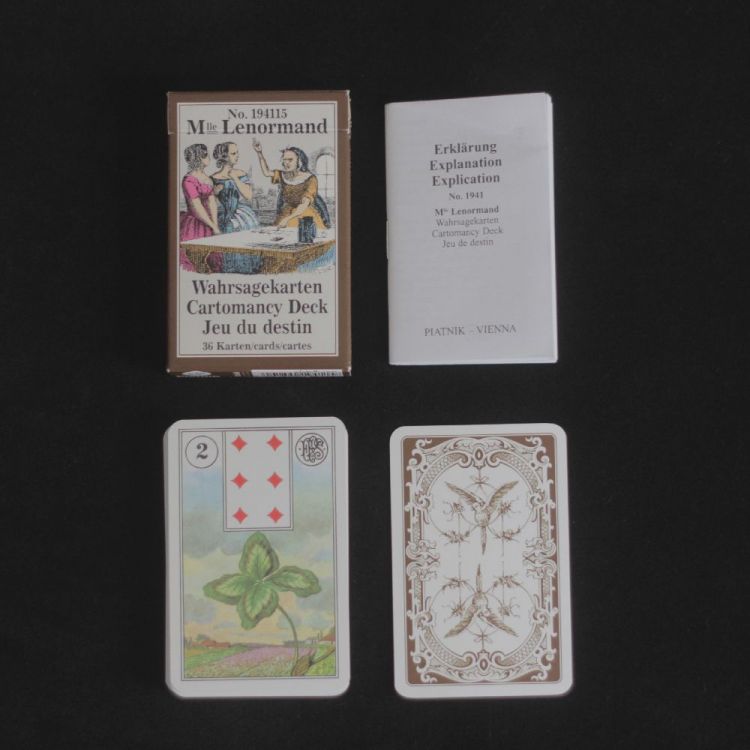The history of the game
Miss Lenormand's story is well known, there is even a Wikipedia page about her life. Marie-Anne-Adélaïde Lenormand was born in 1772 from a rather humble social rank. From childhood, she showed great imagination and curiosity, sharpened by a lively mind. She was sent to the Royal Abbey of the Benedictine Ladies of Alençon, where she began to make predictions. The perspicacity and veracity of these omens made her noticed at the abbey but also sent back. At the age of 21, she went up to the capital during the French Revolution, where she opened a bookstore that became a clairvoyant's office. She knows her first successes before being suspected then locked up by the Comité de salut public. Quickly freed, she managed to make her way through the times, crossing eras and taking advantage of establishing her prestige and her fortune with each change of regime, the Empire under Napoleon and then the Restoration with Louis XVIII. Did she really have a gift for clairvoyance ? Perhaps. However it is sure that she was gifted with a great finesse of mind in the game of intrigues, knowing how to seduce her clientele. Finally, she certainly had a true sense of business. Some specialists allow themselves to think that she had built a real network of informers in the whole of Paris, allowing her to be well informed about her clients and to make her predictions accordingly.
However, we have very little information about the game or games she used for her consultations. It is however commonly accepted that she drew with a deck of playing cards with French signs (Clover, Spades, Heart, Diamond) on which she wrote divinatory annotations. She could have been inspired by the divinatory card game of the German Johann Kaspar Hechtel (1771 - 1799) whose 36-card deck known as "Das Spiel der Hoffnung" (The Game of Hope) was first published in 1799. However, it is more likely that Marie Lenormand drew her inspiration from Eteilla's deck of cards. Indeed, on her arrival in Paris, Marie Lenormand met a fortune-teller named Mrs. Gilbert. The latter taught her divination through the divinatory tarot of Etteilla (1738 - 1791). The latter saw his tarot printed and published for the first time in 1788-1789.

 In this case, you can read the following article which will give you all the keywords for each card of Petit Lenormand :
In this case, you can read the following article which will give you all the keywords for each card of Petit Lenormand :
















